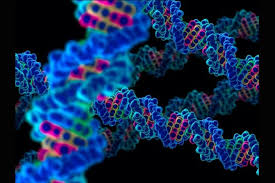Evidence Shows Natural Selection Is Working Right Now to Cull Bad Genes in Humans

Genes associated with Alzheimer’s disease and heavy smoking are broadly less prevalent in people with longer lifespans, suggesting that in spite of our mix of smarts and self-awareness, natural selection is still shaping our species.
In a massive genomic study covering over 170,000 people from across Britain and the United States, researchers identified a variety of individual genes and gene sets that painted a picture of how our genome is slowly evolving from one generation to the next.
Researchers from Columbia University, New York Genome Center and University of Cambridge set out to make a critical step to achieving a rather ambitious goal – to directly measure human evolutionary fitness.
Hindsight is 20-20, and over an incredibly long timescale it’s easy to see how anatomically modern humans slowly changed in size and shape.
On shorter timescales, we’ve been able to compare how genes have come and gone to allow us to adapt to our environment.
Changes in diet have seen many populations adapt to tolerate the sugar lactose within the past 20,000 years, for example.
About 10,000 years ago, a change in the HERC2 gene gave us the first instance of blue eyes, for example – a trait that is now widespread in some parts of the world.
Even more recently our move to live in cities has selected for genes that reduce the risk of contracting debilitating diseases such as tuberculosis and leprosy.
There’s no reason to think humans are no longer under the influence of natural selection, even if that selection often feels less ‘natural’ and more ‘urban’.
In fact, past research suggests over the past 40,000 years evolution of Homo sapiens hasn’t merely continued, it has accelerated.
To see just how our current genes are contributing to our fitness as a species, and potentially get a better grasp on how we will continue to evolve into the future, scientists have cast a wide net over a large section of our global population to see exactly what kinds of genes are linked with our longevity.
The team combined data on 57,696 individuals from the Genetic Epidemiology Research on Adult Health and Aging study with details on 117,648 participants’ parents from the UK Biobank.
“It’s a subtle signal, but we find genetic evidence that natural selection is happening in modern human populations,” says researcher Joseph Pickrell from Columbia University.
One example is in the frequency of a mutation in a gene labelled CHRNA3, which encodes for a subunit of the nicotinic acetylcholine receptor.
he research showed a marked drop in the prevalence of this variation among men starting in middle age, indicating a stronger addiction to nicotine is slowly being selected out of our global population.
Another gene variation that appears to be on the way out is ApoE ε4, which encodes for a type of protein that carries cholesterol and supports injury repair in the brain.
Carrying this variation of the protein increases the likelihood of developing Alzheimer’s disease. The study found a significant decrease in the gene’s presence in women over 70.
While neither discovery is itself surprising, the researchers did expect to find more hazardous variants of each of these genes.
The fact they didn’t spot any suggests it’s possible that those genes have already been purged from our populations as individuals without the genes outcompeted those who had them.
“It may be that men who don’t carry these harmful mutations can have more children, or that men and women who live longer can help with their grandchildren, improving their chance of survival,” says researcher Molly Przeworski from Columbia University.
In addition to those two common mutations, the researchers identified a bunch of other traits predicted by genes associated with shorter life spans, including higher levels of LDL (the so-called bad kind) cholesterol, higher body mass indexes, heart disease, and to a lesser extent, asthma.
Genes that delayed puberty and child-bearing also seemed to being selected for by contributing to longer lives, in line with previous research that showed earlier onsets of puberty was linked with higher risks for type 2 diabetes and angina.
As tempting as it is to extrapolate these findings into predictions on how our species might look in the far future, it’s important to note that our surroundings – including medicine and technology – can always throw in a wild card or two.
“The environment is constantly changing,” says lead researcher Hakhamanesh Mostafavi from Columbia University.
“A trait associated with a longer lifespan in one population today may no longer be helpful several generations from now or even in other modern day populations.”
More data, as usual, will help refine the changes our genomes are undergoing from generation to generation, and better pinpoint exactly how these genes might be helping or hindering our population’s fitness.
When it comes to natural selection, humans are still far from being in control of their own genetic destiny.
“sciencealert”